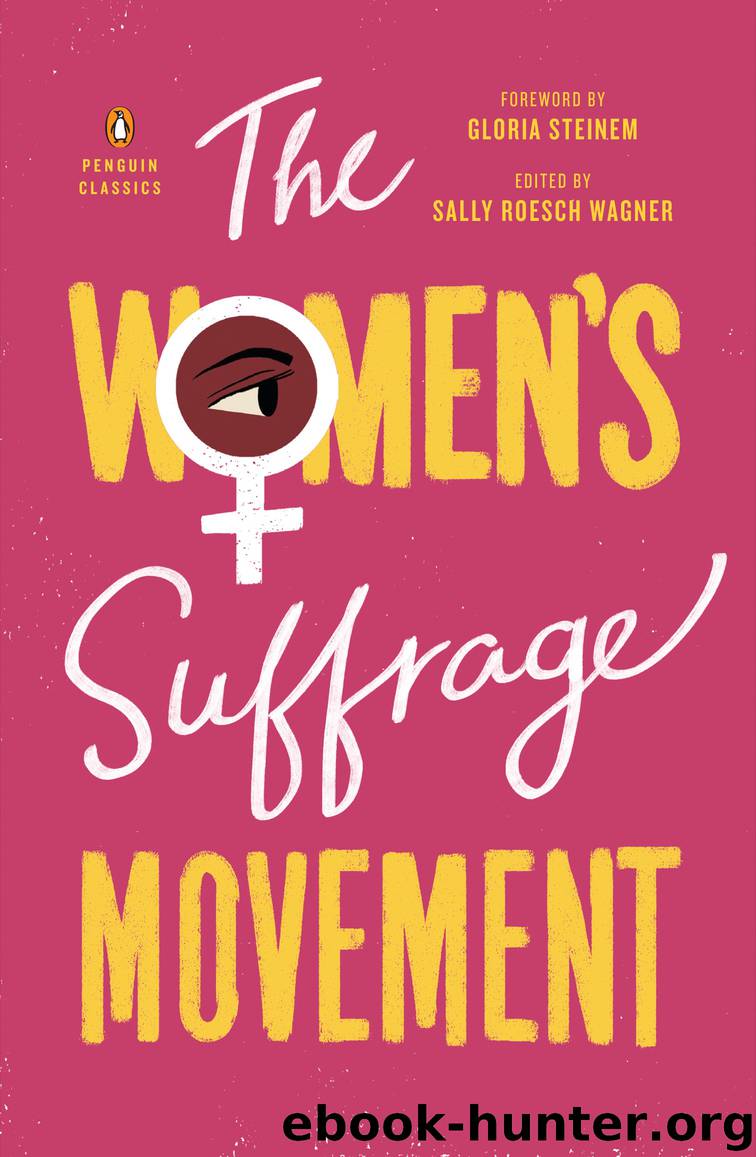The Women's Suffrage Movement by Sally Roesch Wagner & Sally Roesch Wagner & Gloria Steinem

Author:Sally Roesch Wagner & Sally Roesch Wagner & Gloria Steinem
Language: eng
Format: epub
Publisher: Penguin Publishing Group
Published: 2019-03-04T16:00:00+00:00
The sponge and “pessaries” (forms of diaphragms and cervical caps) were available, as well as the “baudruche” (condom), which functioned also “to secure from syphilitic affections.”24 Newspapers secured a whopping one hundred thousand dollars a year advertising birth control pills and abortifacients made of natural herbs—some real, many bogus—“as a preventive of irregularities and as a monthly regulator, thus relieving those suffering with anguish and anxiety,” the cryptic advertisements read.25
The Comstock laws, picked up by many states in an even more repressive form, may have had a far deeper effect on women’s lives than the absence of voting rights. With the legal blackout on birth control and abortion, many women would be forced into unwanted births for nearly a hundred years until the laws’ final overturning by the Supreme Court’s 1965 ruling in Griswold v. Connecticut.
The upshot of Woodhull’s exposé was this. Beecher was fully exonerated; the lives of Elizabeth and Theodore Tilton were shattered; Stanton and Anthony found themselves on opposite sides of a critical issue; and Woodhull and Claflin eventually sought respectability. The AWSA and the NWSA were further divided but a new organization championing woman’s body right soon emerged.
Freethinkers who opposed established religion formed the Liberal League in July 1876. One of the organization’s primary goals was to fight the Comstock Acts, which they did with petitions, court cases, and public opinion but with little success. The organization presented a petition calling for the repeal of the Comstock law with seventy thousand signatures to the House of Representatives in 1878, but Congress upheld the law.
Some NWSA officials, most notably Matilda Joslyn Gage and Elizabeth Cady Stanton, connected with the Freethought movement. The more conservative Christian AWSA leadership did not.
The Freethinkers fearlessly fought for a woman’s right to her body, as well as exposing sexual violation. Defying the Comstock laws, E. H. Heywood included a firsthand account of sex trafficking in his 1877 book, Sexual Indulgence and Denial: Uncivil Liberty. An Essay to Show the Injustice and Impolicy of Ruling Woman Without Her Consent.
CHINESE GIRLS PROSTITUTION . . . A remarkable spectacle was the landing of the women and girls, of whom there were two hundred and forty on board. It was like landing a drove of sheep or cows. At all points of the compass were men to drive them, and they came off the boat in squads of fifteen or twenty each. The policemen and Chinese “bosses” kept each squad together and drove the entire crowd into a corner under a shed, where they stood watched as closely as ever was guarded a gang of slaves in the South. If a Chinawoman, resident here, approached too near, she was seized and pushed away; and if any of the new comers left the crowd, she was driven back, or seized by the back of the neck and shoved to her place again.
Most of those who come are young girls, many not over twelve or fifteen years of age, and nine-tenths, at least, for purposes of prostitution.
Download
This site does not store any files on its server. We only index and link to content provided by other sites. Please contact the content providers to delete copyright contents if any and email us, we'll remove relevant links or contents immediately.
The Secret History by Donna Tartt(18865)
The Social Justice Warrior Handbook by Lisa De Pasquale(12143)
Thirteen Reasons Why by Jay Asher(8802)
This Is How You Lose Her by Junot Diaz(6804)
Weapons of Math Destruction by Cathy O'Neil(6155)
Zero to One by Peter Thiel(5694)
Beartown by Fredrik Backman(5610)
The Myth of the Strong Leader by Archie Brown(5429)
The Fire Next Time by James Baldwin(5253)
How Democracies Die by Steven Levitsky & Daniel Ziblatt(5134)
Promise Me, Dad by Joe Biden(5090)
Stone's Rules by Roger Stone(5029)
A Higher Loyalty: Truth, Lies, and Leadership by James Comey(4852)
100 Deadly Skills by Clint Emerson(4845)
Rise and Kill First by Ronen Bergman(4706)
Secrecy World by Jake Bernstein(4653)
The David Icke Guide to the Global Conspiracy (and how to end it) by David Icke(4629)
The Farm by Tom Rob Smith(4443)
The Doomsday Machine by Daniel Ellsberg(4421)
